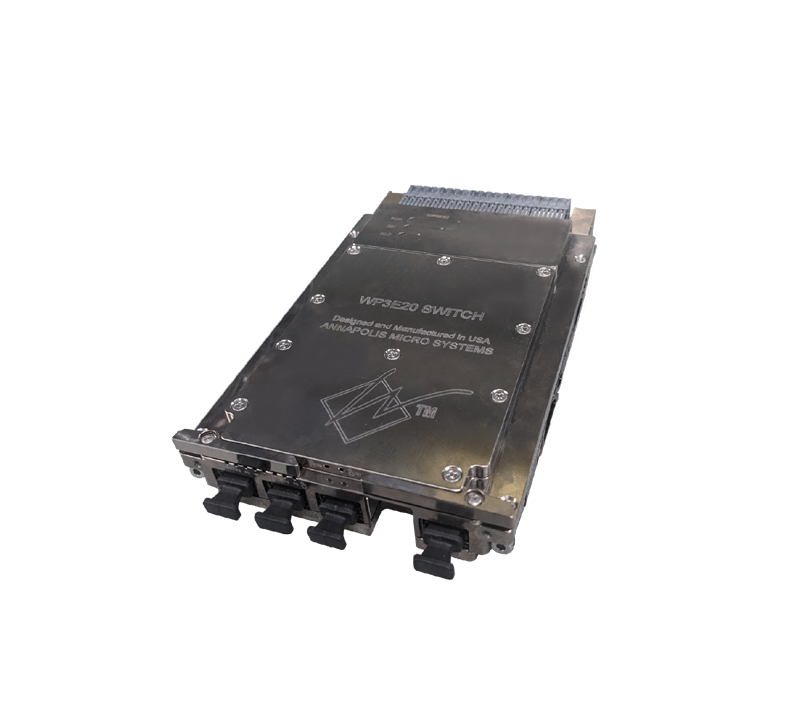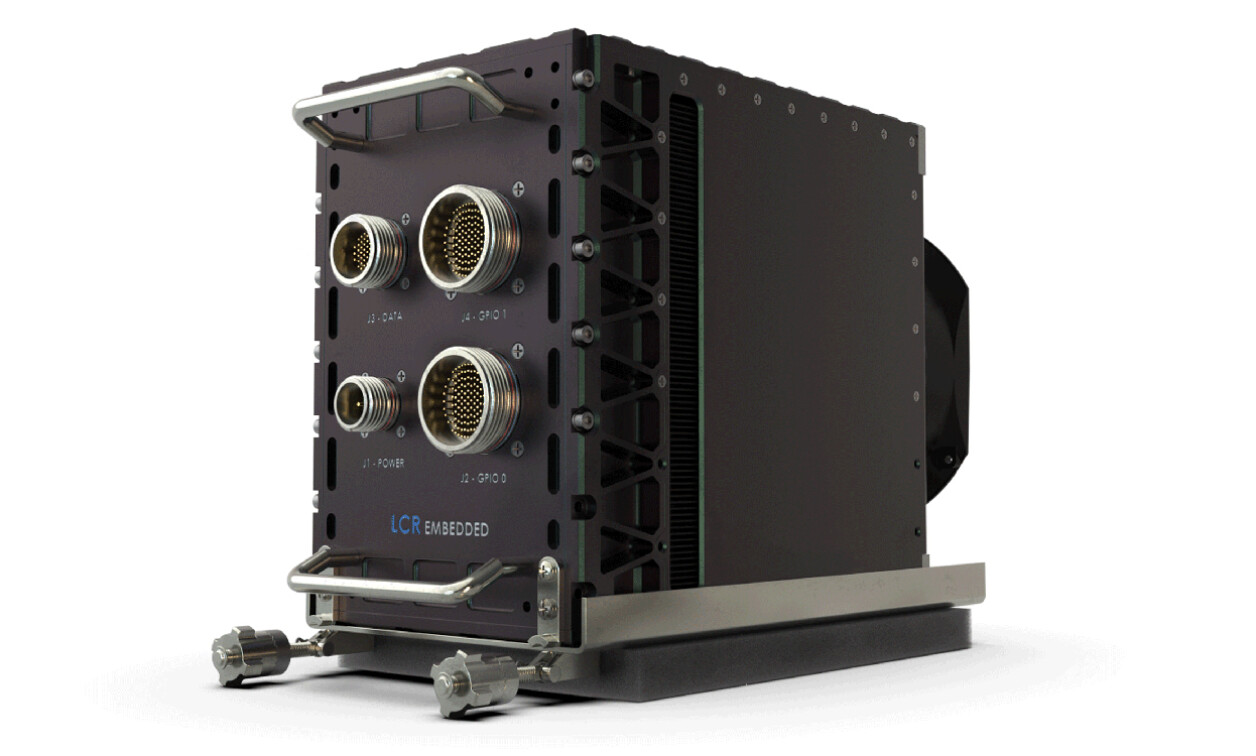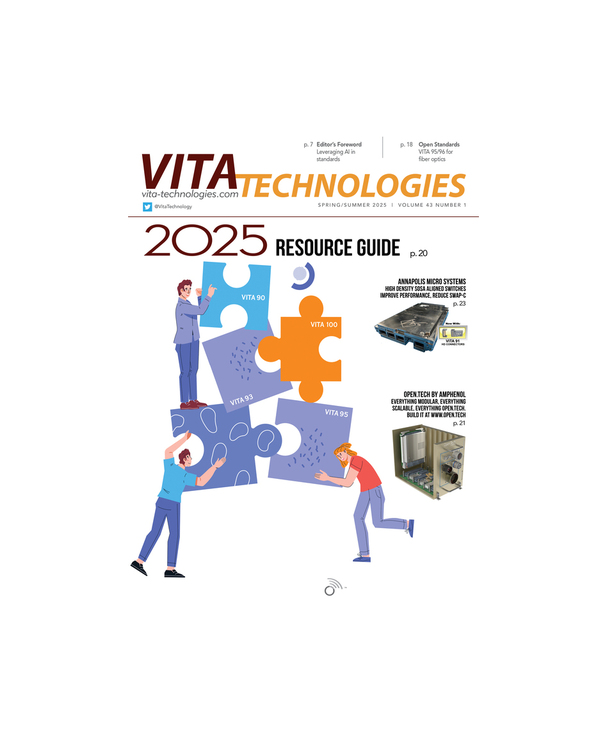Based on the NVIDIA G73M, the new XMC-710 Graphics Controller Delivers OpenGL Processing at PCI Express Data Rates
LEESBURG, VA – January 21, 2008 — Curtiss-Wright Controls Embedded Computing, a leading supplier of rugged embedded boards and subsystems for the rugged deployed Aerospace and Defense market, has announced its first NVIDIA G73M-based graphics display control card, the XMC-710 XMC mezzanine module. This new COTS graphics card is the companys first designed to the new advanced XMC (VITA 42.3) open standard architecture, and is designed for use in VME, VPX and CompactPCI systems. Its rugged small form-factor XMC packaging, and advanced proprietary features, including unique “video freeze detection” capability, provide system integrators with a quickly integrated high performance graphics display controller ideal for space constrained deployed applications and technology refresh opportunities. The card also offers highly integrated software, including Curtiss-Wrights Graphics Software Suite (GSS) and Seaweed Systems Seawind/GL/GN /GL/GN X/OpenGL software to speed and optimize use of this high performance graphics engine.
“The XMC-710 combines cutting-edge NVIDIA graphics processing, unique FPGA-based advanced features and the next-generation PCI Express performance of the new XMC mezzanine module format,” said Lynn Patterson , vice president and general manager of Modular Solutions, Curtiss-Wright Controls Embedded Computing. “The first in a new family of XMC and NVIDIA graphics products, the XMC-710 reinforces Curtiss-Wright as a leading vendor of rugged embedded graphics for the Aerospace and Defense market. With its exceptional performance and breadth of OS support, the XMC-710 is the graphics solution of choice for system integrators today and in the future.”
“Curtiss-Wrights new NVIDIA G73M XMC-710 offer a comprehensive high performance OpenGL graphics solution for defense and aerospace customers,” said Robert Schulman, President of Seaweed Systems. “The cards software integrates Seawind/GL/GN /GL/GN X/OpenGL, optimized for the XMC-710, and Curtiss-Wrights API within their Graphics Software Suite to enable customers to get optimized performance and deploy their systems faster.”
The XMC-710 graphics accelerator provides dual output, and video capture capability. The card is powered by the NVIDIA G73M supported with a 128-bit local frame buffer interface with up to 512 MB DDR2 frame buffer. Complementing the performance of the NVIDIA GPU are Curtiss-Wrights proprietary video processing capabilities. These advanced features, implemented in a non-volatile FPGA, include Curtiss Wrights Video Integrity Monitoring™ (VIM™) video freeze detection. The VIM enhances the integrity of graphics display system to meet specialized requirements in defense and aerospace systems such as safety critical applications. Additional video processing features supported by the XMC-710 include video capture and custom video configuration to ease and speed the support of both legacy and new state-of-the-art displays.
XMC-710 Features:
Nvidia G73m Gpu
Up to 512MB DDR2 SDRAM dedicated graphics memory
Dual independent analog and digital video output:
-Standard non-interlaced analog
-DVI (dual single link, or a single dual pixel link)
-Dual interlaced outputs supporting NSTC, PAL, RS-170, RS-343, STANAG 3350 (A, B & C) and custom modes
-User defined non-interlaced modes
Analog outputs support separate H & V, composite or sync-on-red/green/blue
Video Integrity Monitoring (VIM) for display freeze detection
Video capture:
-Non-interlaced input (RGBHV, RGB sync-on-green)
-Interlaced input including NTSC, PAL, RS-170, RS-343,
-STANAG 3350 (A, B & C) and custom modes
-DVI
Available in air and conduction-cooled ruggedization levels
Flexible I/O via PN6, PN4 or Front Panel
Graphics Software Suite (GSS):
-Hardware accelerated X11 Server
-OpenGL ES 2.0, SC 1.0
-Video capture driver
Operating systems: VxWorks 6.x, Linux, Windows XP
Architecture support: Power Architecture (PowerPC) and x86
The XMC Advantage
The XMC-710, Curtiss-Wrights first XMC-based graphics controller, offers superior data rates compared to earlier PCI-based PMC mezzanine module designs. With support for PCI Express (PCIe), XMC delivers the high bandwidth required in high fidelity synthetic graphics, video capture and overlay applications.
Flexible Design
To support customers with unique requirements, the XMC-710 was designed to adapt to and interoperate easily with different systems. An example of this built-in flexibility is the cards IO mapping architecture which simplifies adaptation to a specific host cards unique pinout configuration to ensure optimal IO routing and video signal integrity. This flexibility enables system integrators to cost-effectively deploy the XMC-710 on third-party basecards.
Software Support
Software support for the XMC-710 includes Curtiss-Wrights comprehensive Graphics Software Suite (GSS). The GSS features X11/OpenGL ES 2.0 and SC 1.0, and application program interface to access the cards value added features such as VIM and custom video modes which are available through the on-board FPGA. Together with Seaweed Systems, Curtiss-Wright offers the latest Seawind/GL/GN X/OpenGL software optimized for the XMC-710. Seawind/GL/GN and the Curtiss-Wright API are tightly integrated within GSS to ease and simplify customer access to the cards full feature set. GSS is supported under Wind River s VxWorks and Linux operating systems. Support for WinXP is also provided via the standard driver from NVIDIA. Support for additional RTOSes and DO-178B is also available through Seaweed Systems.
The XMC-710 is the latest addition to Curtiss-Wrights broad family of rugged embedded boards. It adds high performance graphics processing to XMC-site supported platforms such as the new VPX-based VPX6-185 SBC, VPX3-125 and CHAMP-AV6 DSP engine, and VME-based VME-1901. It also complements Curtiss-Wrights wide range of SBCs, DSPs, Graphics and Communications and IO products. For more information about Curtiss-Wright networking solutions please visit www.cwcembedded.com.
Pricing for the XMC-710 starts at $4,580 USD. Evaluation units are available in January 2008. Production unit availability is scheduled for Q2 2008. . Both air-cooled and conduction-cooled versions, according to CWCEC ruggedization guidelines, are available.
Editorial inquiries: For editorial information regarding Curtiss-Wright Controls Embedded Computing Multi Computing products or services, contact John Wranovics, public relations
director, Curtiss-Wright Controls Embedded Computing, Tel: (925) 640-6402; email. [email protected]. Web site: www.cwcembedded.com.
Sales Inquiries: Please forward all Sales and reader service inquiries to Jerri-Lynne Charbonneau, Curtiss-Wright Controls Embedded Computing, Tel: (613) 254-5112; Fax: (613) 599-7777; e-mail: [email protected].
About Curtiss-Wright Controls Embedded Computing
Curtiss-Wright Controls Embedded Computing is the industrys most comprehensive and experienced single source for embedded solutions, ranging from Processing, Subsystems,
Data Communication, DSP, and Video & Graphics to the most advanced board level components and fully integrated custom systems. The Embedded Computing group serves the defense, aerospace, commercial and industrial markets and is part of Curtiss-Wright Controls Inc. For more information about Curtiss-Wright visit www.cwcembedded.com.
About Curtiss-Wright Controls, Inc.
Headquartered in Charlotte, North Carolina, Curtiss-Wright Controls is the motion control segment of Curtiss-Wright Corporation (NYSE: CW). With manufacturing facilities around the world, Curtiss-Wright Controls is a leading technology-based organization providing niche motion control products, subsystems and services internationally for the aerospace and defense markets. For more information, visit www.cwcontrols.com.
Forward-looking statements in this release are made pursuant to the Safe Harbor provisions of the Private Securities Litigation Reform Act of 1995. Such forward-looking statements are subject to certain risks and uncertainties that could cause actual results to differ materially from those expressed or implied. Readers are cautioned not to place undue reliance on these forward-looking statements, which speak only as of the date hereof. Such risks and uncertainties include, but are not limited to: a reduction in anticipated orders; an economic downturn; changes in the competitive marketplace and/or customer requirements; an inability to perform customer contracts at anticipated cost levels; a change in government spending; and other factors that generally affect the business of aerospace, defense contracting, marine electronics and industrial companies. Please refer to the current SEC filings for Curtiss-Wright Corporation under the Securities and Exchange Act of 1934, as amended, for further information.







